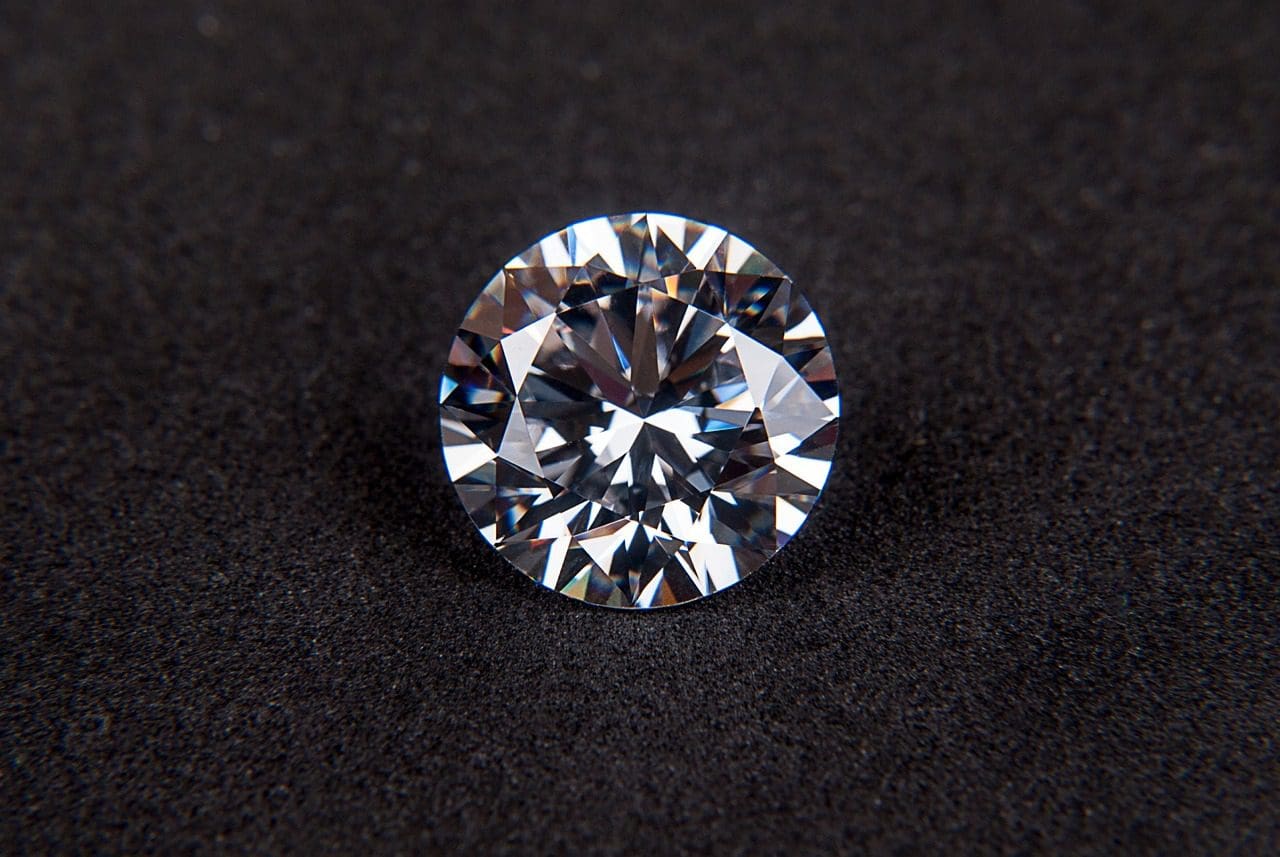Gemstones or precious stones play a pivotal role in the jewellery and adornment industry. The features that they provide are mainly lustre, durability, and also rarity.
Key Takeaways
- Cubic zirconia is a synthetic, lab-created gemstone, while diamonds are naturally occurring minerals.
- Diamonds are the hardest known substance and highly durable, whereas cubic zirconia is softer and more prone to damage.
- Cubic zirconia is significantly more affordable than diamonds, making it a popular alternative for jewelry.
Cubic Zirconia vs Diamond
The difference between cubic zirconia and diamond is that cubic zirconia is a synthetic gemstone that is used as an alternative to diamond, while diamond is the hardest natural stone known to date. On the Mohs Scale of hardness, cubic zirconia is rated 8.5 while diamond is rated as 10.

Cubic zirconia is crystallized from the mineral called zirconium dioxide. It is a denser and heavier stone than a diamond. The lab-grown crystal was found in 1892.
While a diamond is a form of carbon that is arranged in a crystalline form, it is a hexoctahedral crystal that allows thermal conduction and gives a white brilliance under natural light.
Comparison Table
| Parameters of Comparison | Cubic Zirconia | Diamond |
|---|---|---|
| Discovered | In 1937 by M.V. Stackelberg and K. Chudoba | Discovered in the caves of India around 4 and 6 BC |
| Nature | Crystallographically isometric and is obtained in the form of polycrystalline ceramic | Hard crystal, allows heat conduction, high refractive index, and has a specific gravity |
| Dispersion rate | Cubic zirconia has a high rate of dispersion which is about 0.058-0.066 | Diamond has a low rate of dispersion which is about 0.044 |
| Producers | Major producers are CERES Corporation, Taiwan Crystal Company, ICT Incorporated, and Swarovski | Largest diamond mining company is De Beers and its subsidiary company Diamond Trading Company (DTC) |
| Applications | Used in jewelry, windows, building material, prisms, lenses, filters, in the manufacture of laser elements, as a substrate for semiconductors and superconductors, and widely in the bio-engineering industry | Used as gemstones, jewelry, diamond windows, heat sinks, industrial abrasives, speaker domes, low-friction micro bearings, in wire manufacturing and also in various parts of wear-resistant gears |
What is Cubic Zirconia?
Cubic zirconia is a crystal of zirconium dioxide. It is also known as cubic zirconium. It is a colorless synthetic gemstone. It can be produced at a low cost but resembles a diamond.
Though cubic zirconia was found around 1892, it was officially found in 1937 by M.V. Stackelberg and K. Chudoba. The first research regarding the same was conducted in 1960 in France by Y. Roulin and R. Collongues.
Cubic zirconia is coated with a film of diamond-like carbon (DLC) to make it harder and lustrous. Another method called vacuum sputtering is also done, which involves a layer of precious metal over the stone to create an iridescent effect.
Not only in the jewellery industry, cubic zirconia is also used for windows, building materials, prisms, lenses, filters, laser elements manufacture, as a substrate for semiconductors and superconductors, and widely in the bio-engineering industry.

What is Diamond?
Diamond is a form of carbon arranged in a crystalline structure. Diamond is excavated from xenoliths formed at the depth of the earth’s crust and can form as deep as 800 km from the surface.
Diamond is found in three main types of deposits – glacial tills, alluvial gravels, and kimberlite pipes.
The word Diamond is derived from a Greek word called adámas which means unbreakable and unalterable. Diamond was first mined in the Indian subcontinents.
Diamonds are widely used for their beauty and quality as gemstones, jewellery, diamond windows, heat sinks, industrial abrasives, speaker domes, low-friction micro bearings, wire manufacturing, and also in various parts of wear-resistant gears.

Main Differences Between Cubic Zirconia and Diamond
- Cubic zirconia can be available in various color options like pink, green, yellow, purple, and even multicolor while diamond is colorless and may have a tinge of yellow.
- Cubic zirconia acts as a thermal insulator, while diamond acts as a thermal conductor.
